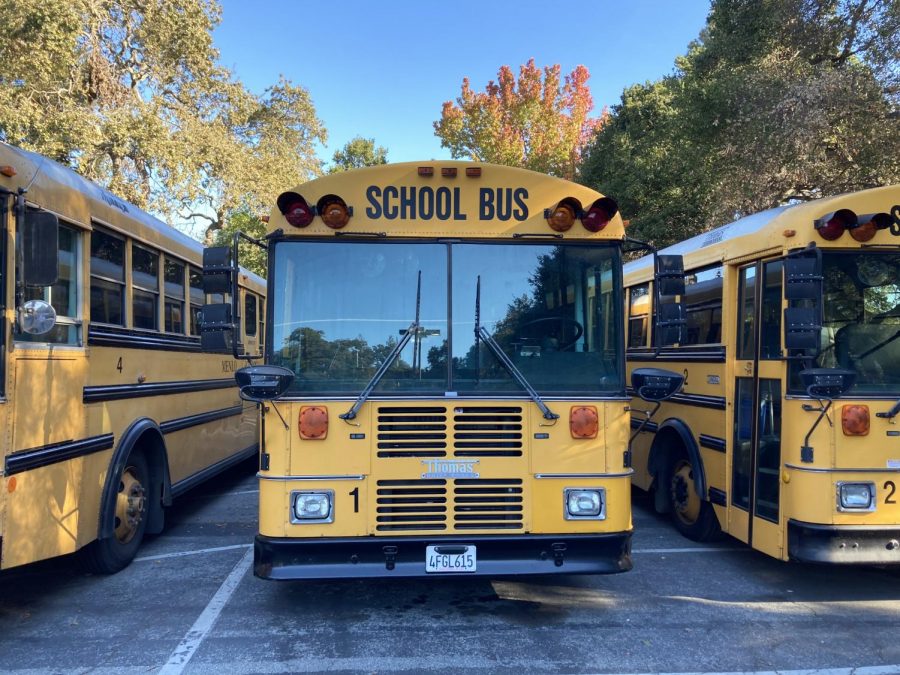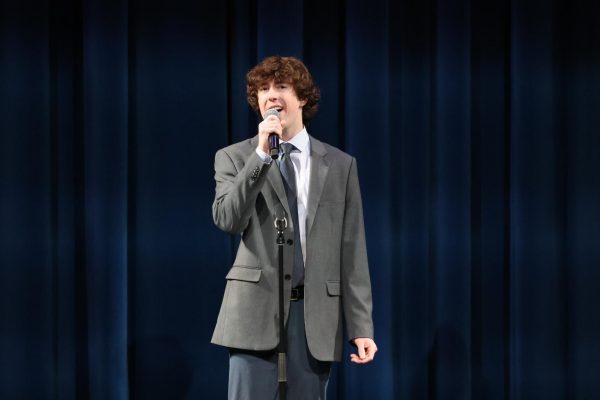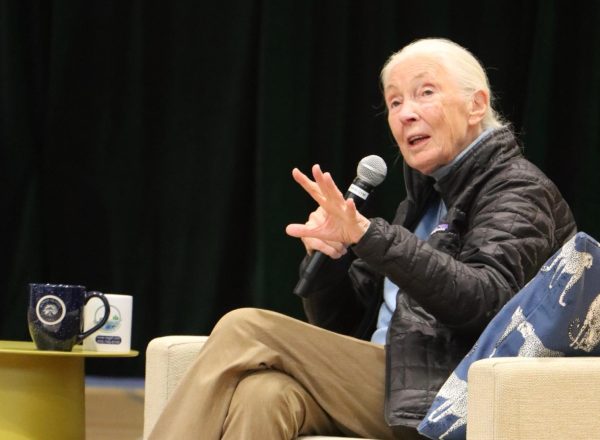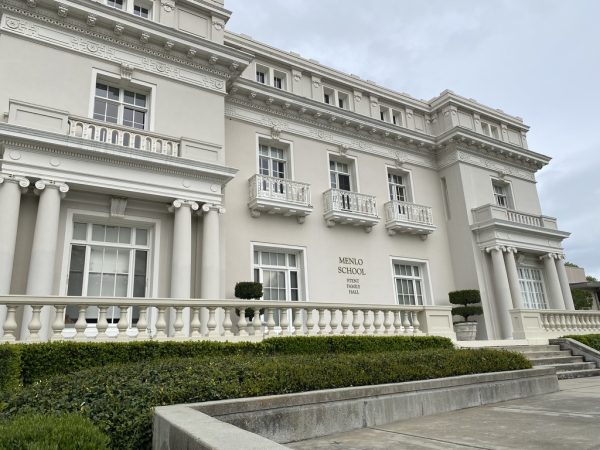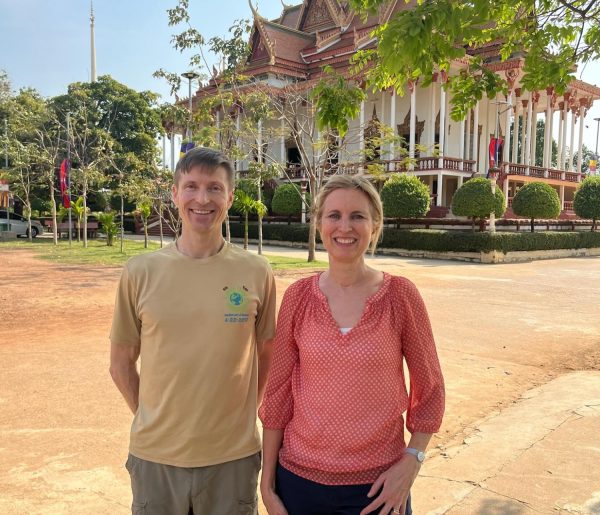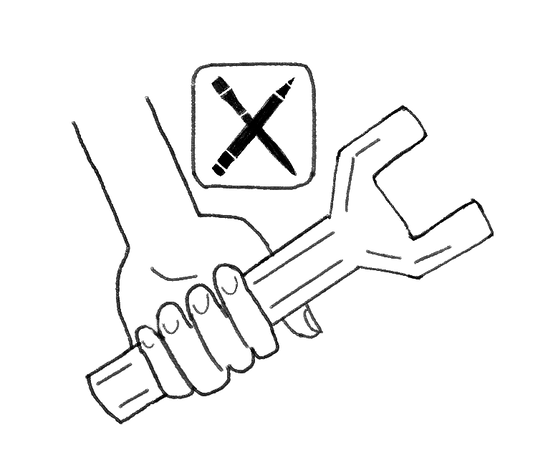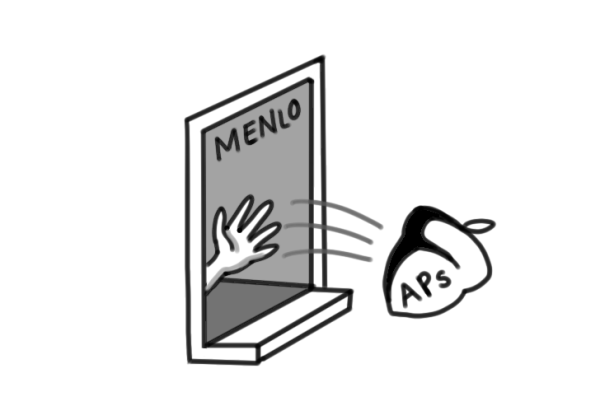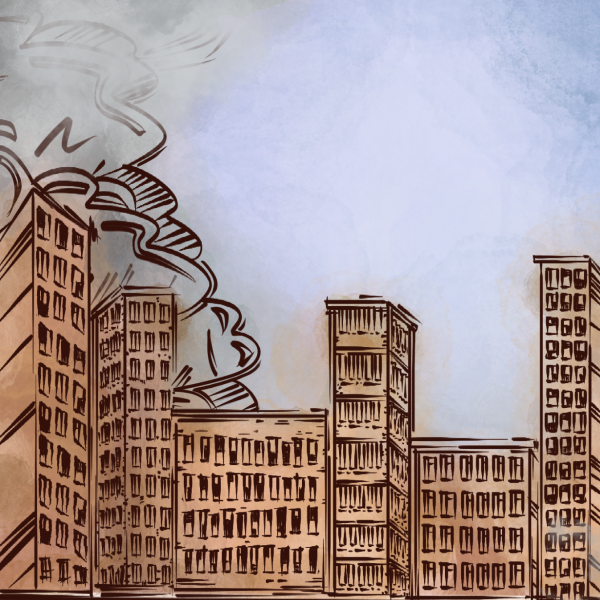Lower Greenhouse Gas Emissions During Pandemic Are Inconsequential Long-Term
While Menlo has paused its normal bus system during the pandemic, it still offers a limited shuttle program. Passengers on Menlo shuttles are required to display a green badge on the One Medical app. Staff photo: Ella Hartmanis.
November 10, 2020
Despite reduced greenhouse gas emissions during the early months of the pandemic, current emission levels are nearly back to pre-pandemic levels, according to CBS. A report by Nature Climate Change stated that during early April, global emissions were down by 17%, which was largely attributed to lockdowns and business closures. However, by early June 2020, levels were back within 5% of their 2019 levels.
During lockdowns, people worked remotely; fewer people commuting to work largely contributed to reduced greenhouse gas emissions. But in recent months, many U.S. businesses have reopened, and people are returning to work. Although remote work and online school remain prevalent, in late June 2020, passenger car traffic in the U.S. rebounded to the traffic levels of 2019, according to a report by Inrix.
In July, used car sales increased by 16%, according to The New York Times. People who relied on mass transit prior to the pandemic no longer want to use buses, trains or ride-sharing services due to sanitary reasons, resulting in the increase. It is also due to the uncertain economy; people don’t want to spend a large sum of money on a car when they are at risk of losing a job, according to The New York Times.
On a local level, while shelter-in-place mandates were in place, Caltrain lost 95% of its ridership, according to the San Francisco Chronicle. Consequently, the agency is faced with an $18.5 million budget shortfall. To keep the system running and fund long-term improvements, Measure RR was proposed. It was passed during the Nov. 3 elections and allows for a ⅛-cent sales tax increase in San Mateo, Santa Clara and San Francisco counties. The sales tax is projected to raise approximately $108 million annually for 30 years. The ballot had to be approved by ⅔ of voters in all three counties. There wasn’t much opposition to the measure, but there was controversy as to whether it is fair to raise taxes when many people are out of work and without a source of income, according to the SF Chronicle.
Despite decreased ridership, over 3,500 weekday riders continue to use the Caltrain service, many of whom are lower-income workers and do not have cars to commute, according to the SF Chronicle. Sophomore Madison Vitro took the train during seventh grade through ninth grade. However, this year, during hybrid learning, Vitro plans to have a parent drive her to school until she gets her license. “I feel more comfortable being in my own private vehicle instead of using public transportation because of the close proximity to strangers during the pandemic and potentially unreliable sanitation systems,” Vitro said.
Similar to Vitro, junior Jazlin Chen lives a substantial distance from Menlo and took public transportation before she got her license, which she now uses to drive herself to school. “Personally, I don’t feel unsafe taking public transportation, but my mom prefers me not to just because of safety and sanitary reasons,” Chen said.
Menlo continues to provide a transportation system to students during hybrid learning but has made some adjustments. According to Director of Sustainability Chrissy Orangio, all passengers taking a Menlo shuttle must have a green One Medical badge, which means that they must have a recent negative COVID-19 test, pass a temperature check and remain six feet apart from others. Menlo plans to use larger buses if necessary. “We are running shuttles only based on necessity right now, so the shuttles run less frequently and have fewer riders,” Orangio said.
Although this setup is only temporary until it is safe for more riders to be on a bus, Menlo is working to prioritize community members’ safety. “We have done our best to ensure that whoever rides the shuttle is doing so safely to protect our students and our drivers. Until the pandemic is under control, we have to respect everyone’s choice on how they choose to get to school,” Orangio said.


